Mindy has asked for recommendations for growing in shade under trees where you have a lot of tree roots to contend with. I have been trying to grow in those conditions for about the last 30 years. The first 20 years most trees in neighbor's yards were not mature yet and I had an established garden that I was not trying to change. About 10 years ago I had to make changes when the shade and tree roots were making it too difficult for anything to grow.
It has been a challenge. I've asked a lot of people on GW and read many posts on this topic. I've taken lots of suggestions made and researched lists of plants that work for these conditions. It's an ongoing project. Here are my experiences in growing under these conditions. Would love to hear what your experiences have been. What have you tried, what worked, what didn't?
What has been happening along our lot line with many Maple tree roots? I have an Arborvitae that is working in more shade than I would have thought was possible. It's only getting about 2 hrs of sun in the morning and then filtered light later in the day. It's very close to the trunk of a Silver Maple, maybe 5ft? It is a Western Arborvitae and it was recommended by New England Nurseries, when I asked for suggestions for this site. I have 'Emerald Green' in a sunnier location, but the Western Arborvitae does well in more shade with tree roots than the EG in more sun. I make sure it gets water when it's been dry. I have a soaker hose looped around the base of it, and I use that when we have a dry spell. I do mulch with bark mulch.
I should point out that I have Silver Maple trees in neighbor's yards. Five of them. These trees have particularly aggressive roots and it's been recommended to me not to water individual plants or fertilize individual plants trying to grow in their root zone, because the roots will seek out the water and nutrients and your plants will have more roots to deal with. So I try to wait for a rain or use a sprinkler on the whole area and then give each plant extra water.
I have tried Viburnum maresii, which someone on the shrub forum suggested, despite the fact the shrub is said to prefer a moist location, I liked it so much I gave it a try. And I can say that has not worked out as well as I wanted. It has survived, it has grown slowly and looks great every spring, but when July and August hit, I can't keep up with watering it and it looks miserable and drops it's leaves early. I'm getting ready to replace it with something else.
I have a 'Wentworth' Viburnum next to that which has done really well. It's very tall, maybe 9ft? Has a lot of berries on it and nice fall color. Doesn't seem to be bothered by the dryness or the part shade it is in. Gets maybe 3hrs of sun. I don't give it any special attention. It's growing right around the drip line of two Maples, one to it's West and one to it's North, so it faces East where the 3hrs of sun comes from before it is shaded by another Maple to it's South.
Three other shrubs that are doing well around that same location, facing East near the drip line of the Maples are an Oakleaf Hydrangea, and two Clethras. I know Clethras are supposed to prefer moisture, but mine have not skipped a beat since I planted them. It looks clean and healthy every year, and blooms very well. I have 'Hummingbird' which stays about 4ft tall and spreads out. 'Sherry Sue' Clethra is one of my favorites, the flowers are longer and dangle and smell like vanilla up close and it blooms in September instead of the summer like 'Hummingbird'. Bumble Bees cover it when it is in bloom and appreciate such a great food source so late in the season. Sherry Sue is taller at about 6-7ft. I found that one at Broken Arrow. Of course all of these shrubs are rather casual, but I'll take whatever grows successfully. They are not in full shade.
On the other side of the yard, in the corner that is the shadiest, I have Taxus, that has done well and does not get extra attention. It is not as dense as it would be in more sun. I have two Blue Hollies that also do very well. These are in the deepest shade, with very little sun except filtered light and a little late afternoon sun. They have grown slowly but are now at the height I need and all these shrubs together are screening that corner of the property.
I have a shrub that I could recommend as growing easily in the shade and is not bothered by the dryness or the Maple tree roots. It always looks healthy and never needs attention. It grew very quickly to about 8ft tall. It also offers white berries for the birds. The one drawback is that it suckers a lot. It's a Gray Dogwood, a native shrub. It does work in a challenging situation, but you have to be comfortable with the suckering. It is growing, blooming and fruiting with a stockade fence 4ft away on it's South side, and about 10ft away on the other side of the fence, there is a huge 50 year old Silver Maple, so that is pretty challenging. It does get maybe 2 hours of sun from the east in the morning.
Shrubs I've tried and found difficult to establish were, Rhododenron and Azalea, which could be the PH? Mine is usually around 6PH. I have two, they do okay but not growing gangbusters at all. I have a Nova Zembla that is hanging on and growing slowly that is completely under the canopy of a Maple whose canopy is about 6feet off the ground. And it's about 5ft away from the trunk. I do give that extra water, trying to get it to a decent size to be a screen for me. I have a 'Purple Gem' Rhodie that I ignored this year that is in a good amount of sun but in the root zone of a lot of trees and it had yellow leaves on it by mid summer.
I tried two Ninebark 'Summer Wine' in about 4 hours of sun but in the root zone of a lot of trees and they did not do well in that location. They are supposed to tolerate dry soil too and they are native. I moved one of them to the corner of the house away from trees but in an equal amount of sun and left the other one there. The one I moved took off and grew into a great shrub, that I really enjoy. The one I left behind did absolutely nothing from one year to the next. Never grew, just barely hung on with sparse growth, no height, and by late summer had dry edges on the leaves even with watering a lot some seasons. I don't think they would do well in a root zone and shade.
I tried boxwood under the canopy of a Maple and a native Ilex glabra, they wouldn't grow at all.
For perennials, I have a Maidenhair Fern on the North side of my Garage and that does pretty well. Never looks dry and crispy and it is in one of those areas that doesn't get a lot of rain. It doesn't look lush for sure, but it did have a good amount of growth on it this season. I think with supplemental watering it could do well.
Mindy, you asked and I haven't tried growing lamium up a fence. I have some in very shady areas that doesn't really spread, but it comes back every year. I have a lot of Japanese Ferns that I like a lot. Hellebores do well, Solomon's Seal, European Ginger, Hostas. Some woodland phlox and Tiarellas which tend to become unnoticeable along with the Bleeding hearts over the summer, then come back great every spring. Lunaria does very well for me and reseeds. I have some Cimicifuga but I ignore it and by late summer the leaf edges are dry. It's under a tree canopy with no sun. My most dependable plant in this dry shady area, is Epimedium. I have a lot of that growing all over the garden.
I thought about trying to alter the growing conditions more, as you are doing. Thought about mirrors. About amending the soil more. In the end, I didn't want to fight it, it takes too much energy. So I've just experimented. You always wish you had more options, but considering what I am working with, I'm happy I can grow something that I like. Good luck, I would be happy to hear about any successes you have in these conditions.
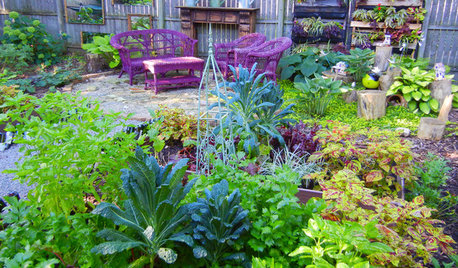

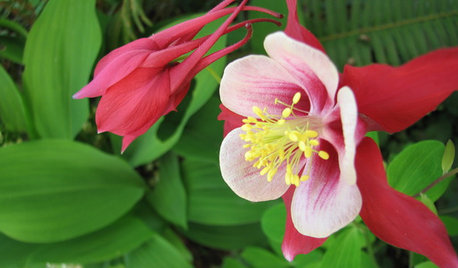



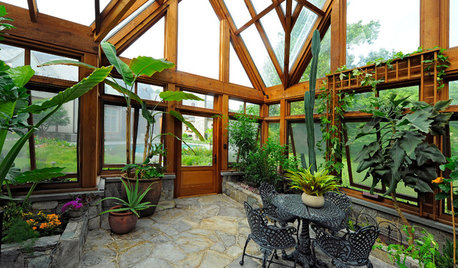
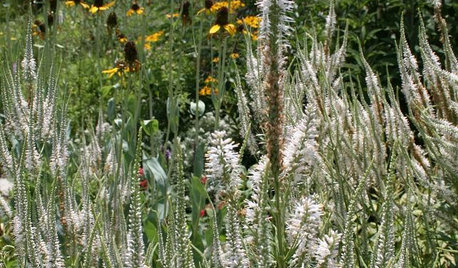








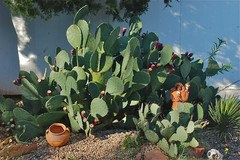
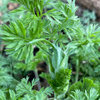
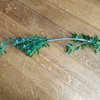
User